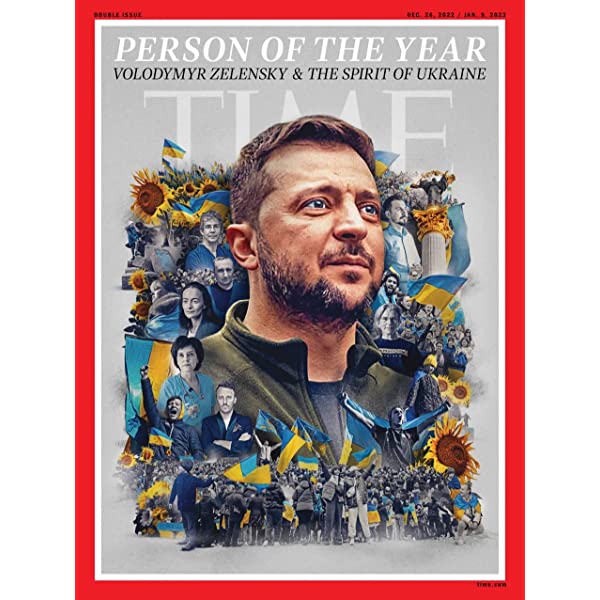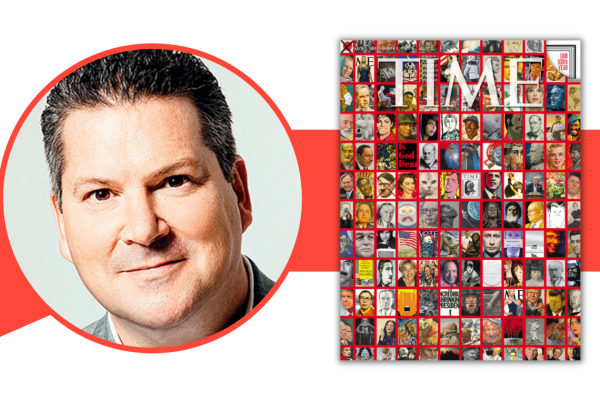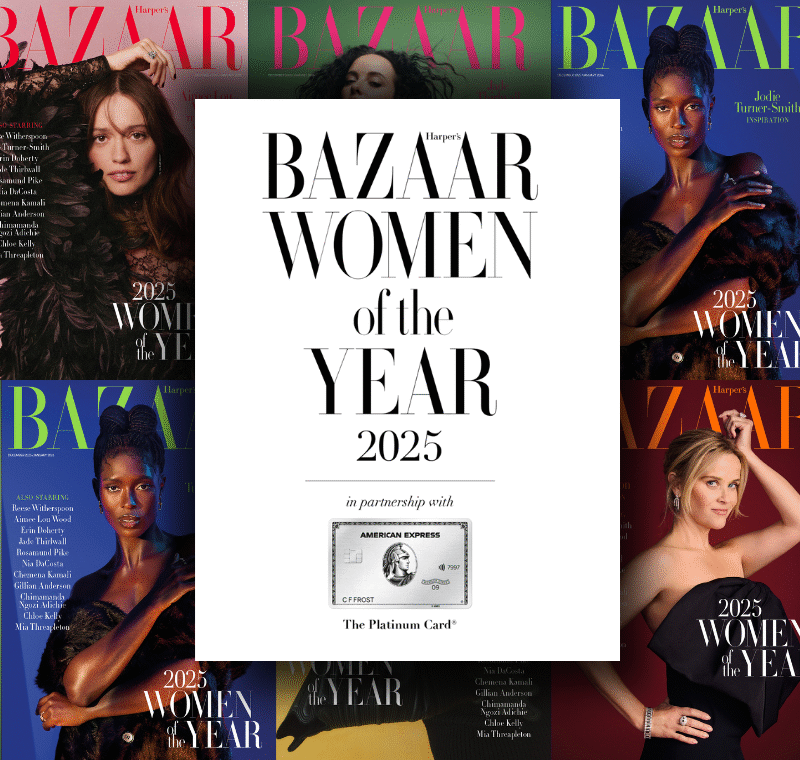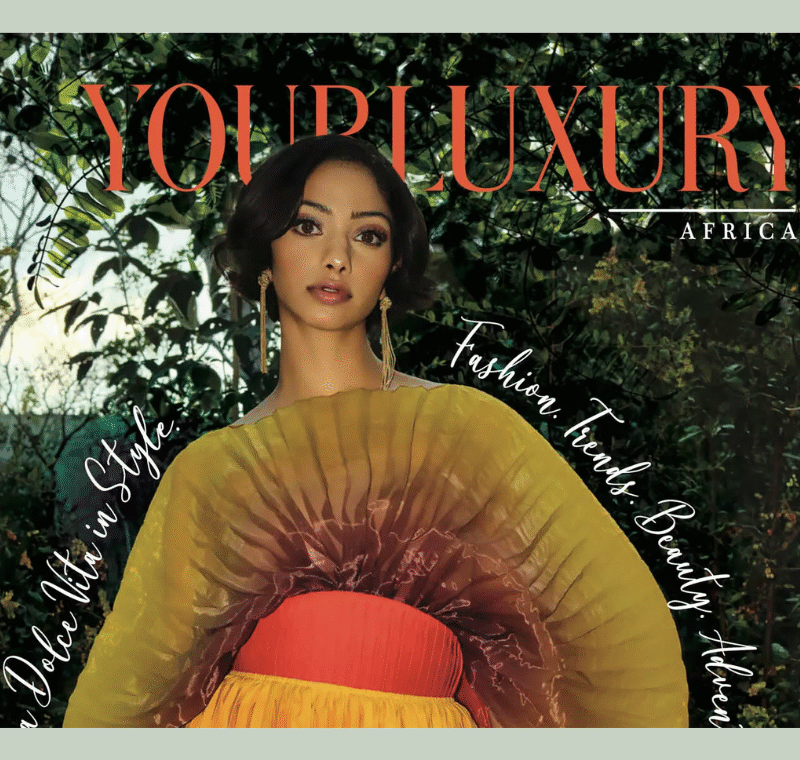Cover of the century
Five years ago, FIPP interviewed D.W. Pine, Creative Director at Time magazine – and the force behind some of the brand’s most iconic covers. Now, on Time’s 100th birthday, we spoke to him again about Donald Trump, the “metabolism of magazines”, and how he managed to distill a century’s worth of images into one killer cover…
So… happy birthday to Time! How does it feel putting that 100th anniversary cover out into the world?
It feels great! With the 144 images making up that cover I wanted not only to showcase the great artists and photographers who have helped us with every issue, but I also saw it as an opportunity to give a new perspective on these covers. Some of them are very well known, even iconic, and framing them together within that red border was a way to see them anew. It’s been a really great kick-off for a whole year’s worth of birthday celebrations.
Choosing only 144 must have been an incredibly tough choice…
Yeah, there are more than 5,200 covers! I knew I wanted to have the first ever cover from March 1923 at the centre, and have the more iconic ones – God is Dead, the Warhols, Roy Lichtenstein – radiating out from that. I also wanted to make sure there was one cover to represent every year of the last 100. There have been 18 US presidents since Time was founded, and I knew every single one of them needed to be on the cover. I also wanted to encapsulate the variety of topics Time covers, from world leaders to climate, from technology and business to sports, to all the things inbetween. It was quite a daunting task, but I think the result really brings all those stories to life.
As a weekly publication, how far out do you plan a cover?
It depends. We do try to look ahead, but being a news magazine, we always want to be part of the current conversations about what’s happening in the world. In the case of the famous Osama Bin Laden cover with the X on it, I literally had that cover ready to go for two years. On the other hand, I’ve had covers where we’ve literally ripped up everything that we did, and had to produce the cover in a matter of hours. When Steve Jobs passed away, we’d already got a cover and we were all heading home. Then when we heard the news, we all came back in and created an entirely new issue in six hours.
How do you find working at that kind of pace?
I love that metabolism. I have a newspaper background, and I’ve always liked that energy. I mean, it’s a little scary. But I’m not alone – I work with a team of very smart people.
Time is obviously focused around people – how do you decide what to capture about each person? I’m thinking in particular of the Zelensky cover…
It’s a challenge, because we are all absolutely inundated with images. With Zelensky, we’d all seen him millions of times. So what we tried to do – what we always try to do – is to create an image that people hadn’t seen. We ended up calling the cover ‘the spirit of Ukraine’, and we tried to capture that by not only bringing Zelensky to the foreground, this leader who has brought his country through war, but also the people who have helped support him. It meant we were able to tell some of their stories. We’re always looking to capture somebody in a new way – if it’s in that red border, we want it to be memorable.

Your boss, Edward Felsenthal, described you as “the Trump expert”. What challenges did you have covering the Trump presidency?
We have an interesting relationship with the former president – he loves us, and he hates us. In a way, I think that’s a good place for us to be with the leader of the country. The first day he was the commander in chief of the United States, he said in a speech, “I’ve been on the cover of Time 14 or 15 times, which has to be an all time record.” It was interesting that that was even at the top of his mind on such a significant day. We’ve now done 35 covers of Trump, but at the time, he had only been on the cover 11 times – Richard Nixon has the record with 55 covers. I remember when he was introduced as the candidate, we went to the Trump Tower. I wanted a photograph of him with a bald eagle sitting on his desk, because why wouldn’t he have an eagle on his desk? Unfortunately the bald eagle was very animated that day, and we ended up with a viral video – showing a bald eagle flying round the office of the leader of the free world.
How did you decide how to represent such a divisive figure?
It was a balance. Sometimes we were hard on him – graphic designer Edel Rodriguez created a whole visual language around him, the orange and yellow visual cue. Tim O’Brien – who’s done more covers than any other artist in the last 30 years – created four successive covers with a rainstorm, where the rain gets heavier and ultimately fills the Oval Office so he’s floating outside. Trump actually created fake covers of Time that he put in his golf clubs throughout the world. We had to respond by telling readers how to spot a fake cover. We never wanted to be too flippant – he was the president so we had to be respectful, and there were very serious policies being discussed – but at the same time we wanted to capture what really was a circus at times. It was an interesting period!
How do you judge the ‘success’ of a cover? Is it sales figures, critical response, or something more creative?
That’s changed over the years. These days it’s not necessarily based on newsstand sales; that said, we are a business, and it’s certainly an important aspect of success. Social media plays a role: what people are talking about, and how we can successfully make our way through that cluttered landscape. How are people reacting to it? Is the message getting out correctly? The cover has many different purposes, of course, and one of them is to drive people toward new, great journalism. There is also a personal aspect to success. It’s a hard thing to quantify, but it can be connected to how we feel as a staff. It may be that we didn’t get our best ever audience, say, but we could still feel we did a really great job on something that we care about. That’s part of Time’s mission, to do a story justice.
What input or influence do the journalists or contributors have on the cover?
It’s usually a team effort. The writers are the ones who intimately know the subject, who are on the frontlines. I tend to do two things: One, I take input from the writers, because something they say could spark a visual idea. Then there’s the flip side of it – the cover has a separate mission from just illustrating the story. It is almost a story in its own right, an additional, distinct piece of reporting.
How has the digital/online space impacted the way you design covers in the last few years?
The mission of a cover is still to be simple, clear, impactful… and sometimes provocative. Nowadays, we reach the largest audience we’ve reached in our entire history – over 100 million. So I’ve had to pivot a bit, think of the canvas in digital terms – from slightly larger typography and simpler coverlines to the cover image itself. We have to take a very complex subject, and crystallise it into a very simple 8 by 10 canvas, grab people quickly. That takes a lot of crafting. And of course we’ve been doing cover animations since 2014, and that’s brought an entirely new audience to Time.
Has that affected the way you think about the cover design?
I can’t say I approach the cover of the magazine thinking “animation first” – but maybe digital first. The animation is just to bring a little bit more energy, and we do it fairly quickly. We’ll ship the magazine, I get the files over to the animators, and they turn it around within three or four hours. It’s been a lot of fun to do.
Last time we interviewed you, you described the cover of Time as “the most important real estate in journalism”. Five years on, is that still the case?
I’m always pleasantly surprised at how a Time cover can break through the noise of the online space and still resonate. Yes, we’re bombarded with news and imagery… but it’s hard to find places that you can trust. Having worked at Time for almost a quarter century, I know the work and the care that goes into every story that we do, and that’s important to our readers. Upholding trust is part of Time’s DNA. So yes, I believe it is still the most important real estate, and – to extend the analogy – that it makes all the artists and photographers that we hire ‘the architects’. They help us build that.
You’re 800 covers in. How do you keep the ideas coming?
Coffee! I still get a lot of energy from working with artists and photographers, and the staff. I learn new things every single day – and there are always new ways to tell stories.








